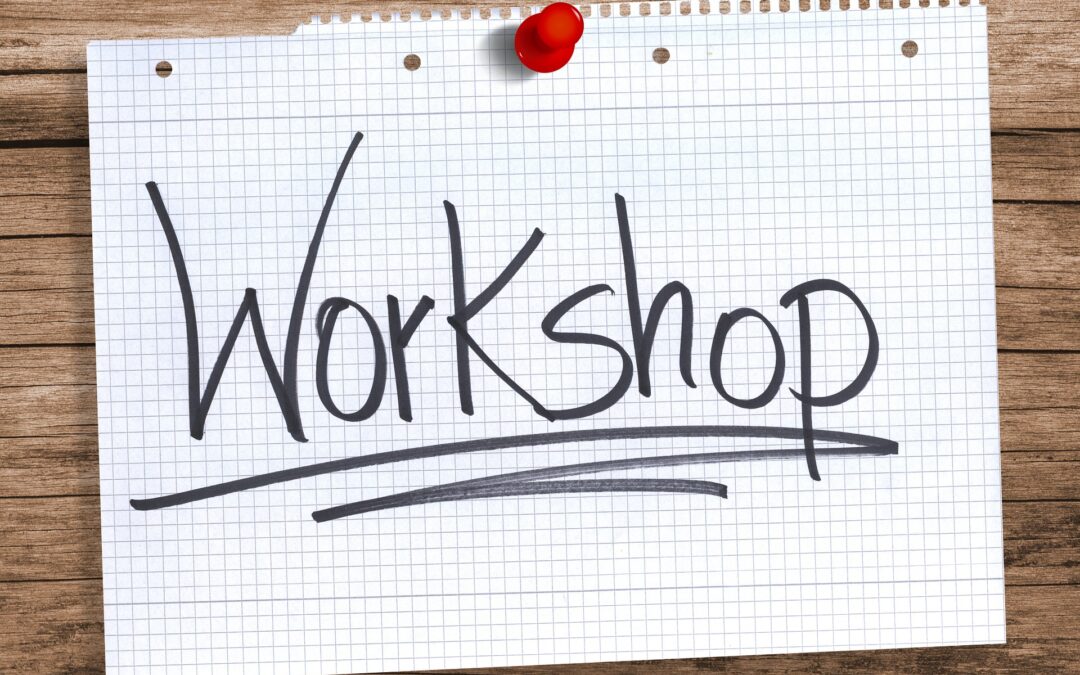
Is your child a smart struggling neurodivergent kinesthetic learner who:
- Learns best when he or she sees and experiences information
- Has many strengths and a number of challenges
- Is a lot smarter than present results would indicate
28 years ago, we realized that despite having excellent teachers, tutors and learning centers, our daughter was still struggling. “As an educator, I realized there had to be a better way”, says Mira Halpert who has her Master’s in Education from the University of Michigan and is the Founder and Director of the 3D Learner Program ®. Over the last 27 years, we have helped thousands of students succeed, with a program that:
- Teaches to our student’s strengths
- Identifies and addresses their challenges
- Produces significant gains in months in academics, executive function and self-confidence
As one parent said after our workshop, “You described my child to a T”, Gail D, Coral Springs.
Her son went from a struggling student at a special school for students with learning differences to a public school, where he later qualified and succeeded in their gifted program.
Another parent commented, “You showed us our daughter’s gifts and helped transform her into an outrageously successful student”. Dr. R St Petersburg, FL.
Their daughter was almost retained at a private school and the next year was in the highest reading group and her anxiety challenges were no longer an issue. When asked how she became such a prolific reader the young lady commented, “3D Learner taught me how to visualize what I read, do you know how cool that is?”.
At 3D Learner, we have found that success starts by helping parents to be Informed, Empowered and Proactive Parents focused on making the difference for their child. Thanks to Dr. Marie Rogers, we are delighted to be offering a no cost workshop at Atlantic Behavioral Health. The details are as follows:
How to Get It Right Starting Now!!
On Saturday September 23rd, from 10 am to Noon,
at Atlantic Behavioral Health
50 NE 26th Avenue Pompano Beach, FL 33062
we will be conducting an Interactive Workshop for Parents of
Neurodivergent, Bright Right Brain, Kinesthetic Learners.
We will be focusing on creating a Pathway to Success for Your Child to
Get It Right Now!!!
Seating is limited. Call 3D Learner at 561-361-7495 to discuss what we are offering and to reserve your spot or click here to schedule a call.
7 Items We Will Discuss
- Why your child might be struggling and yet, have so much upside potential
- Why it is important to reject the status quo now and to commit to helping your child to be all he or she can be starting now
- The value of the right assessment — that highlights your child’s:
- Strengths
- Challenges
- Present level of performance
- Potential
- The value of writing BOLD Goals, affirming them and then and making it happen.
- The value of working with the right team, that might include psychologists, educators, optometrists, teachers, and/or others, where appropriate.
- The value of:
- Journaling
- Mindfulness
- Visual schedules
- A real commitment to Success
- Using tools that create the right picture for your child
- Being Informed, Empowered and Proactive Parents
- Creating a Pathway to Success for your child and you
To discuss your situation and/or to register for the event, call 3D Learner at 561-361-7495 or click here to schedule a call.

Most smart struggling students are right brain kinesthetic learners, who learn best when they see and experience information.
For the right brain kinesthetic learner, private schools offer real advantages:
- Many have smaller class size
- Some have more hands-on activities, like labs
- Music and other programs may be stronger
- There are often fewer children with behavior issues — some private schools try to screen out these kids and when behavior issues do occur, the private schools may be less tolerant of these issues, and may ask the parents to find a different school for their child
- Private school staffs may have more time to work with collaborative parents,
- Some offer specialized tutoring — which often helps with reading fluency — how well a student reads out loud.
The three biggest challenges we see with private schools, especially in Florida, include:
- The problems with reading comprehension, math and writing often persist and may widen.
- Many private schools do not offer additional tutoring, and when they do, they are either:
- More focused on reading fluency and do not teach the way a bright right brain kinesthetic learner learns best and/or
- They may be expensive.
- Private school demand is higher than at any point in recent times. due to an expanded voucher program.
This blog post has three key themes:
- Collaboration with private school is much more likely to succeed than confrontation
- If you suspect your child is a right brain kinesthetic learner, there is real value in Assessing for Success
- If your child is a lot smarter than present results would indicate, there is real value in considering a Transformational Program that could generate significant gains for your child within months
If we can help in any way, feel free to call us at 561-361-7495.
Collaboration is the Key
Already this school year, we have had parents complain and express their frustration that:
- Their child who has been in a specific private school for years was still way below grade level.
- For a couple of parents whose child has just enrolled in a private school, they are frustrated that the Special Education protections their child had in a public or charter school are no longer present.
- Their child’s school does not have the programs to close the gap for their child.
All these challenges are real. Specifically:
– Assessments done by psychologists and learning centers like 3D Learner expose reading comprehension and other gaps that were not apparent to the family. Note, in the post pandemic era, we are seeing public, charter, private and homeschool students who are a lot smarter than present results would indicate and who are much further below grade level than what we were seeing a few years ago.
– IDEA Protections provided by the Individuals with Disabilities Education Act do not cover private school students
– Private school programs to help struggling readers are often focused on reading fluency
To make matters more challenging for parents, the demand for private school, especially in states like Florida with an expanded voucher program, far exceeds the seats available.
We strongly recommend parents work with private schools in a collaborative way. We have helped a number of private school parents to partner with private schools to resolve the situation.
If you would like a no cost conversation, call us at 561-361-7495
Outside Assessments Can Really Help
Three very common challenges we are seeing in students include:
- Many are bright right brain kinesthetic learners, and the parents were not aware of the benefits and challenges this presents. Click here for our screening tool focused on:
“Is my child a right brain kinesthetic learner”
- Many of the students we see have a visual processing issue. Click here for screening tool focused on:
“Does my child have a visual processing issue”
- Reading comprehension gaps are often larger than parents thought they were.
At 3D Learner, we often start the process with parents by discussing a parent’s concerns and if appropriate, discuss how we might assess for success.
If you would like a no cost conversation, call us at 561-361-7495
3D Learner Offers Transformation Learning Program
that Can Change a Child’s Life
Two cases highlight what is possible:
A rising third grader was almost retained at a good private school. The parents got a private evaluation from a psychologist. The psychologist recommended a dyslexia treatment and ADHD medication.
Mom called a friend who asked her a few questions. When it became clear the young lady was a hands-on learner, the friend recommended she call 3D Learner.
Mom called us and it was quite clear after a few minutes that her daughter:
- Was a right brain kinesthetic learner who learned best when she saw and experienced information
- Had a combination of attention, anxiety and related challenges
- Was really struggling at private school.
The next step was to do an assessment.
Our assessment:
- Confirmed her daughter was a right brain kinesthetic learner with an attention and anxiety challenge.
- Showed a visual processing issue, where her daughter skipped words and lines when reading.
- Showed her daughter read slowly and was 1.5 years below grade level in reading comprehension.
With our help
—Her daughter improved her reading comprehension to a year above grade level.
—Attention and anxiety issues were neutralized.
—Spelling scores went from 50 and 55 to 90s, 95s and 100s, with weekly spelling time reduced from 3.5 hours per week to under an hour. As her father said, what was even more amazing was she remembered the words a year later
—She went from a reluctant reader to the most prolific reader in her class. She read 720 pages in a month, when the average student in her class read 185 pages. Dad asked her how this happened, and she said, “3D Learner taught me how to visualize what I was reading and reading became fun”.

Another parent was told to not even consider a college prep private school. Despite a gifted IQ, mom was told to lower her expectations for college. The psychologist had recommended two more dyslexia treatments. Mom asked if there was an alternative program that taught the way her child learned. 3D Learner was recommended. We were able to help her son, who later became valedictorian at this prestigious private school and later graduated from Harvard. Mom was asked what made the difference and she said, “You changed his attitude and that made 90 percent of the difference”, Kim F, Parkland.
Note, even gifted right brain kinesthetic learners struggle to reach their potential. It is not uncommon for them to excel in certain areas and to struggle with reading comprehension, working memory, processing speed and self-confidence issues.
If you would like a no cost conversation, call us at 561-361-7495

Right brain kinesthetic learners face huge risks this school year. Many teachers will be new, schools may be understaffed, and special educators may be overwhelmed. In this blog, we will discuss:
– How to expedite a special education evaluation
– Why and how to improve an IEP
– Why more may be necessary to have your child reach his or her potential.
Note, many public and charter schools have invested in dyslexia treatments. This will help student’s reading fluency, but it often does not significantly improve reading comprehension.
We have had parents who asked their child’s school to evaluate their child for special education services. We have heard many excuses, with the most common being, we need to complete the RTI or Response to Intervention Process first — some schools now refer to this as MTSS, or Multi-tiered System of Support.
This is not acceptable. Back in 2011, Dr. Melody Musgrove, the Federal Director of the Office of Special Education Programs, developed a policy that “RTI Cannot Be Used to Delay or Deny an Evaluation”. Click on this link and you will get a more in-depth discussion of this issue, a copy of Dr. Musgrove’s letter. RTI Cannot Be Used to Delay or Deny an Evaluation “. Here is a link to a sample letter you can tailor to your situation. We have used this hundreds of times and it works virtually every time. Mary used this note and made sure to give her informed consent for an evaluation. It was approved 1 week later, the evaluation was completed, and an IEP was developed within 60 days. It is doable.
Most Individualized Education Plans or IEPs we read anger us. There has been a trend to focus on reading fluency, how well a student reads out loud, and even when there are reading comprehension goals, they rarely close the gap.
Let’s take the case of Alex. He was a 6th grader. His IEP said he was reading at the 5th grade level. His homework, which should have been taking an hour, was now taking 3 hours and sometimes more.
When we assessed his reading comprehension, we found his reading comprehension was at the 3rd grade level. For comprehension, his goal was to answer who, what, where, why and how questions correctly 4 out of 5 times at his independent reading level.
Mom asked for an interim IEP meeting and asked the school to evaluate his reading fluency and his reading comprehension. The school assessment showed his reading fluency and reading comprehension were at the 5th and 3rd grade levels respectively. Mom got an interim IEP and they adjusted his reading comprehension goal to make 1.5 grade level improvement in a year.
For The Right Brain Kinesthetic Learner, Schools Rarely Address 5 Key Issues
While reading fluency has gotten a great deal of attention with the focus on dyslexia, 3 issues that are often not addressed in a comprehensive way include:
- Reading comprehension. Note, if a student is 3 years below grade level and over the next year they improve their reading comprehension 1.5 grade levels, they will still be 2.5 years below grade level.
- Vocabulary. The right brain kinesthetic learner often does not master vocabulary the way schools teach. Looking up the definition, writing the word and using flash cards to master the words rarely helps the right brain kinesthetic learner.
- Executive function issues are often identified but not addressed. We have seen students who have IEPs for years where.
- Attention continues to be a major issue
- They have an excellent visual memory, but have great difficulty remembering what they hear or read
- They read very slowly
- Visual processing issues often get worse as the words get smaller. This may result in skipping words and lines when reading, making careless mistakes in math and having difficulty copying off the board.
- Too often the right brain kinesthetic learners are both frustrated and anxious.
At 3D Learner, our goals often include:
- Targeted efforts to improve reading fluency, based on the specific needs of a student.
- Improving reading comprehension by 2, 3 and even 4 grade levels within 4 to 6 months.
- Significantly improving vocabulary, first with a focus on the small words that often confuse a right brain kinesthetic learner.
- Identifying and addressing the relevant executive function and/or visual processing issues.
- Lowering anxiety and frustration, while boosting self-confidence.
If we can help in any way, call us at 561-361-7495 or click here to schedule a conversation.

Dear [Teacher’s Name],
I hope this note finds you well. I wanted to take a moment to provide you with some insights into my learning style and preferences as a student. I am a right brain kinesthetic learner, which means that I have unique strengths and challenges that might affect my learning experience in the classroom.
Strengths:
- Hands-On Learning: I thrive when I can engage in hands-on activities and experiences. Interactive projects, experiments, and practical demonstrations are fantastic ways for me to grasp and retain information effectively.
- Movement and Exploration: I learn best when I am allowed to move around and explore my environment. Incorporating movement-based activities, such as games that involve physical actions, can greatly enhance my learning experience.
- Creativity and Imagination: My right brain dominance fuels my creativity and imagination. Encouraging artistic endeavors, storytelling, and imaginative tasks will enable me to express myself and understand concepts more deeply.
Challenges:
- Attention Span: I might struggle with sitting still for extended periods. It could be helpful to incorporate short breaks or movement-based transitions to help me refocus and maintain my attention.
- Sequential Processing: I might find it challenging to follow strict step-by-step instructions. Breaking down tasks into smaller, manageable parts and using visual aids can assist me in understanding and completing assignments. I’m a “big picture” learner. I need to have an idea of what the end product looks like. Modeling lessons really helps.
- Verbal Instructions: I may not fully grasp concepts if they are solely explained verbally. Providing visual aids, diagrams, or practical examples can greatly enhance my understanding of complex ideas. If I tell you “I don’t understand“ something, please rephrase it so I get a better picture in my head. Remember- it takes me a little more time to process information because I have to “download a picture” to understand what I need to do.
- Organization: Keeping track of materials and assignments might be difficult for me. Providing clear organizational tools, such as visual schedules or color-coded instructions, can help me stay on track. Having my own visual schedule will help. Helping me with my planner would be appreciated. Sometimes just writing/copying what the assignments are is stressful. I can do the work, but writing all the assignments can be difficult. We can work on that together this year.
I am excited about the upcoming school year and eager to learn in a way that suits my unique learning style. By incorporating a variety of kinesthetic and creative teaching strategies, I believe we can make the learning process engaging and enjoyable for me.
Thank you for taking the time to understand my learning style better. I’m looking forward to a productive and successful year in your classroom.
Sincerely,
[Student’s Name] [Student’s Signature, if applicable]
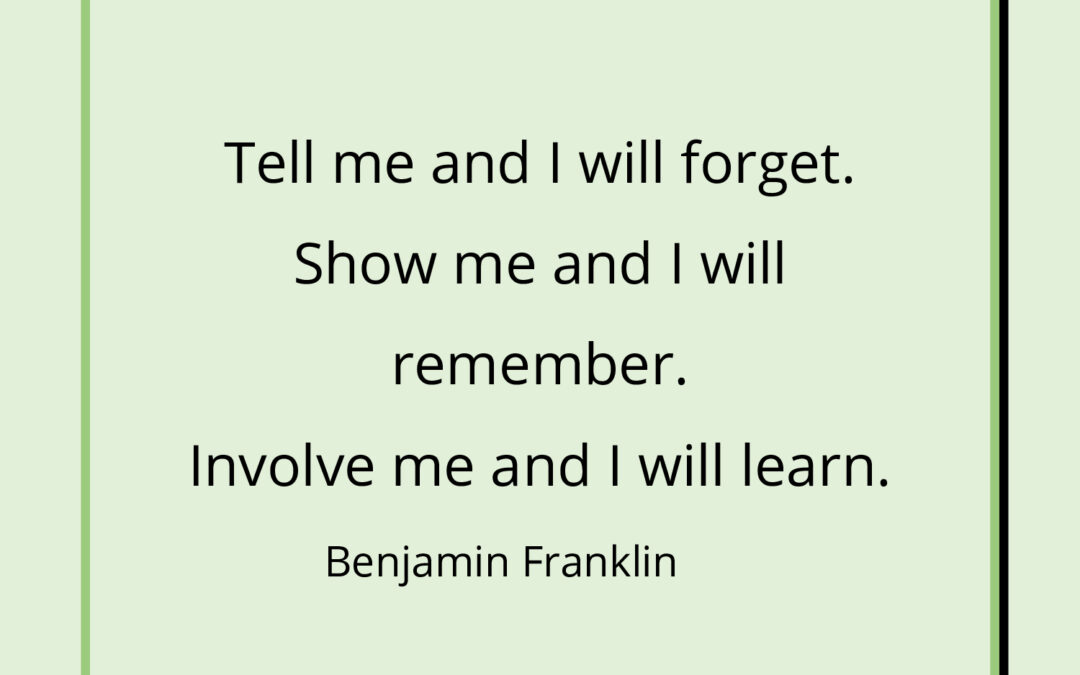
Parenting a right brain kinesthetic learner can be rewarding and incredibly frustrating. We lived through years of frustration, before we realized our daughter was a right brain kinesthetic learner who could do far better with a hands-on and engaging learning process I developed. We have helped thousands of other right brain kinesthetic learners to be far more successful than even their parents thought possible. Our assessment process is designed to both identify your child’s learning style, their strengths and their challenges and their present level of performance – especially for reading fluency and reading comprehension. After our assessment, we then discuss with parents their child’s unique profile, and what we think is possible with a tailored program for your child.
We start with four key thoughts:
- Probably 75 to 85 percent of the smart struggling students are a right brain kinesthetic learner who can do far better when they are taught to their strengths
- Too often assessments focus on one area or the student’s challenges. We have found there is tremendous value in identifying the right brain kinesthetic learner and in identifying whether they have a visual processing issue, executive function issues and/or dyslexia. We also know that reading fluency is used as a barometer of reading skill. We believe it is critical to assess for both reading fluency and reading comprehension.
- Informed, empowered and proactive parents can and often do make the difference.
- Comprehensive assessment can help you understand your child’s strengths, challenges and how you can make the difference.
Note, the 3D Learner Assessment can be completed live in either our Coral Springs, Florida, or Durham, NC locations or via zoom.
If you would like to discuss your specific situation and whether your child might be a right brain kinesthetic learner, you can either:
– Call us at 561-361-7495 or click on
– Schedule a conversation to find a mutually agreeable time
Most of our students are bright right brain kinesthetic learners, who learn best when they see and experience information. These students often:
- Are a lot smarter than present results would indicate
- Benefit from special education and tutoring, which are both helpful, but rarely help the student to reach his or her full potential
- Have some combination of visual processing, auditory processing and/or executive function challenges
- Have dyslexia, but not always. About 33% of our students have dyslexia.
- Can make far greater progress within months if their parents invest in a program that:
- Leverages their strengths and engages them
- Identifies and addresses their challenges
- Has a clear understanding of the present level of performance on key items.
- Is tailored for their child. Every child is unique, and their learning style plays a crucial role in shaping their educational journey. Among the different learning styles, right brain kinesthetic learners stand out as individuals who absorb information best through hands-on experiences and visual aids. In this article, we’ll explore why it’s essential to assess the strengths and challenges of right brain kinesthetic learners, particularly concerning visual processing issues, executive function issues, and dyslexia. By understanding their learning profile, we can design a tailored program that nurtures their abilities for a successful learning experience.
Unraveling the Right Brain Kinesthetic Learner
The right brain kinesthetic learner is characterized by a preference for tactile experiences, physical movement, and visual learning. These learners thrive in an interactive environment, where they can touch, explore, and manipulate objects to understand concepts better. Identifying this learning style ASAP can significantly impact a child’s educational progress. Note, we did not get it right until 11th grade. It did help our daughter to improve her reading comprehension 4.2 grade levels in 7 months and improve her GPA from a 2.7 to a 4.4. Note, the earlier the better, but it is never too late.
The Power of Assessing Strengths
Assessing a right brain kinesthetic learner’s strengths is the first step toward unlocking their potential. You want to identify areas where the child excels. Whether it’s artistic abilities, strong spatial awareness, or exceptional hand-eye coordination, recognizing these strengths can pave the way for a personalized learning approach. The questions we ask and the Structure of Intellect Assessment ® we use helps us to identify how your child learns best. A Boca Raton Principal commented, “I really liked the Structure of Intellect Assessment; why did we stop using it?”. Her special education specialist said that the government requires us to label a child and the SOI Assessment does not label a child. The SOI helps to tailor a program to meet the child’s needs, which is why 3D Learner uses it.
Understanding Visual Processing Issues
Visual processing issues can affect a right brain kinesthetic learner’s ability to comprehend visual information efficiently. These learners may struggle with tasks that involve reading, interpreting diagrams, or following instructions with visual cues. Identifying and addressing visual processing challenges early can lead to targeted interventions and improved learning outcomes. We use a Visagraph to show how a student’s eyes track. Here is a video that shows a student’s tracking before and after our program. We find a significant visual processing issue in close to 70 percent of our students.
Navigating Executive Function Issues
Executive function issues can pose additional obstacles for right brain kinesthetic learners. These cognitive processes are responsible for organization, time management, and impulse control. When executive functions are weak, students may face difficulties in planning, initiating tasks, and staying focused. Implementing strategies to bolster executive functions can support the learner in managing academic responsibilities effectively. Note, we use the Mindprint Assessment ® developed by the University of Pennsylvania to assess Executive Function Skills for students reading at the 2nd grade level or higher. We also use the Interactive Metronome ® to assess for attention. This is an excellent tool to show an attention issue, and it is very effective at improving attention.
The Impact of Dyslexia
Dyslexia is a learning disability that affects reading and language processing. For right brain kinesthetic learners with dyslexia, traditional reading approaches may not yield the desired results. Recognizing the presence of dyslexia is vital for providing appropriate accommodations, such as alternative reading methods, assistive technologies, and specialized tutoring. We use the CORE Assessment, which is part of the University of Florida’s UFLI Program ® we are certified to provide.
Designing a Program for Success
By acknowledging the strengths, visual processing issues, executive function issues, and dyslexia in a right brain kinesthetic learner, parents and educators can design a comprehensive program tailored to their specific needs. Here are some strategies to consider:
- Incorporate hands-on activities and visual aids into lessons to enhance learning engagement.
- Use technology and interactive learning tools to support comprehension and retention.
- Provide a structured and organized learning environment to address executive function challenges.
- Seek support from educators, specialists, and support groups to develop targeted interventions for dyslexia.
The Value of Assessing for Success
Recognizing and understanding the learning style of a right brain kinesthetic learner is crucial for their educational success. By assessing their strengths, visual processing issues, executive function issues, and dyslexia, parents and our team can create a personalized program that nurtures their unique abilities and helps overcome challenges. Through a tailored approach, we can empower your child to thrive academically and develop a lifelong love for learning.
Note, the 3D Learner Assessment can be done live in either our Coral Springs, Florida, or Durham, NC locations or done via zoom.
If you would like to discuss your specific situation and whether your child might be a right brain kinesthetic learner, you can either:
– Call us at 561-361-7495 or click on
– Schedule a conversation to find a mutually agreeable time
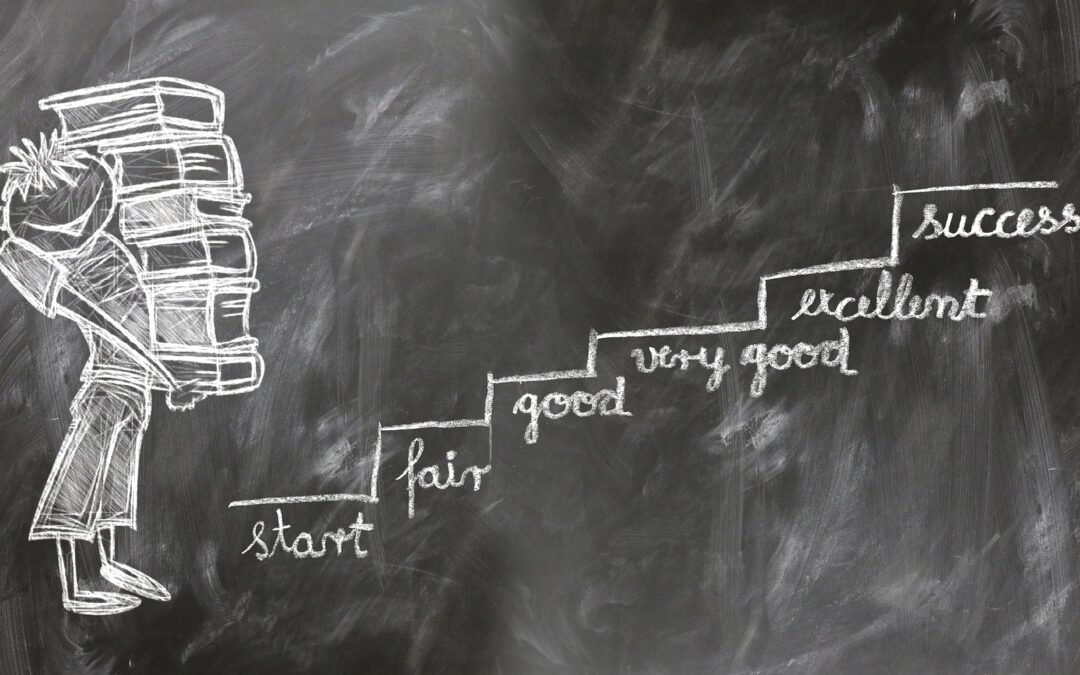
(Strength based training and strength based parenting works for these students)
We focus on how parents can take charge and help your right brain kinesthetic learner succeed. Note, most smart struggling students are right brain kinesthetic learners, who learn best when they see and experience information. When we were told our 8th grade daughter was not college material, I became a mom on a mission. I leveraged my educational and parenting skills and developed what has become the 3D Learner Program ®. With the program, she was able to improve:
- Her reading comprehension 4.2 grade levels in 7 months
- Her Grade Point Average from a 2.7 to a 4.4
- Chances for success. She got her Master’s in Education from the University of Florida. Next year will be her 19th year of teaching and in May 2024 she should be receiving her Doctorate in Education from the University of Florida.
Many of our students are bright right brain kinesthetic learners, who often struggle with:
- Reading comprehension — just this year we have had 6th and 7th graders who were 3, 4 and even 5 years below grade level
- Reading speed — too often students read so slowly that it is hard to sustain attention
- Math word problems
- Putting their thoughts on paper
- Being in classes with kids who are not motivated
For the purposes of this blog post, we will define success for these students as:
- Being on grade level for reading speed
- Reading comprehension two, three or four grade levels higher than their present level
- Being able to get a B or better in math, learn how to check their work and start to like math
- Both mastering math facts and being good at math word problems
- Writing at least at grade level
- Being able to do their homework more independently in much less time
- Now being placed in advanced or gifted classes, where they are far more engaged
- Being proud of their success
Here is a classic case:
The parents had invested $34000 in a competitors’ program and their 5th grade daughter’s reading comprehension was at the 1st grade level, she was a slow reader, and her homework was taking 2.5 hours or longer. She came across an article that asked
- Does your child remember places visited, even from years ago?
- Does your child learn best when he or she sees and experiences information?
- Is your child a lot smarter than her present level of reading comprehension would indicate?
The mom was an action taker. She called us from Texas and wanted to know more. We did a remote assessment that showed her reading comprehension was at the 1st grade level, her reading speed was 115 words per minute and she was a right brain kinesthetic learner. Her parents brought her to Florida for an intensive week of training.
6 months later, she had improved as follows:
- Her reading comprehension was now at the 5th grade level
- Her reading speed was 229 words per minute, virtually doubling where it had been
- Homework time had decreased from 2.5 hours to 1.25 hours and her mother’s time helping her had decreased from 2.5 hours to 15 minutes
- She was now doing well in school and was being recommended for some advance classes in 6th grade — where she did very well
Note, in 2023 we had had many local successes and we had had successes with students from the State of Washington and Arizona.
If you would like to discuss how to put your child on their
Pathway to Success, call us at 561-361-7495
What Are The Common Strengths and Challenges for The Smart Struggling Student
The bright right brain kinesthetic learner often has 3, 4 or 5 of the following strengths and challenges
They often:
- Learn differently and are right brain kinesthetic learners
- Have auditory and/or visual processing issues
- Have one or more executive function challenges (attention, working memory and/or processing speed)
- Have a learning disability or dyslexia
- Are frustrated and/or anxious
Note, the strengths of the right brain kinesthetic learner are rarely identified or capitalized on.
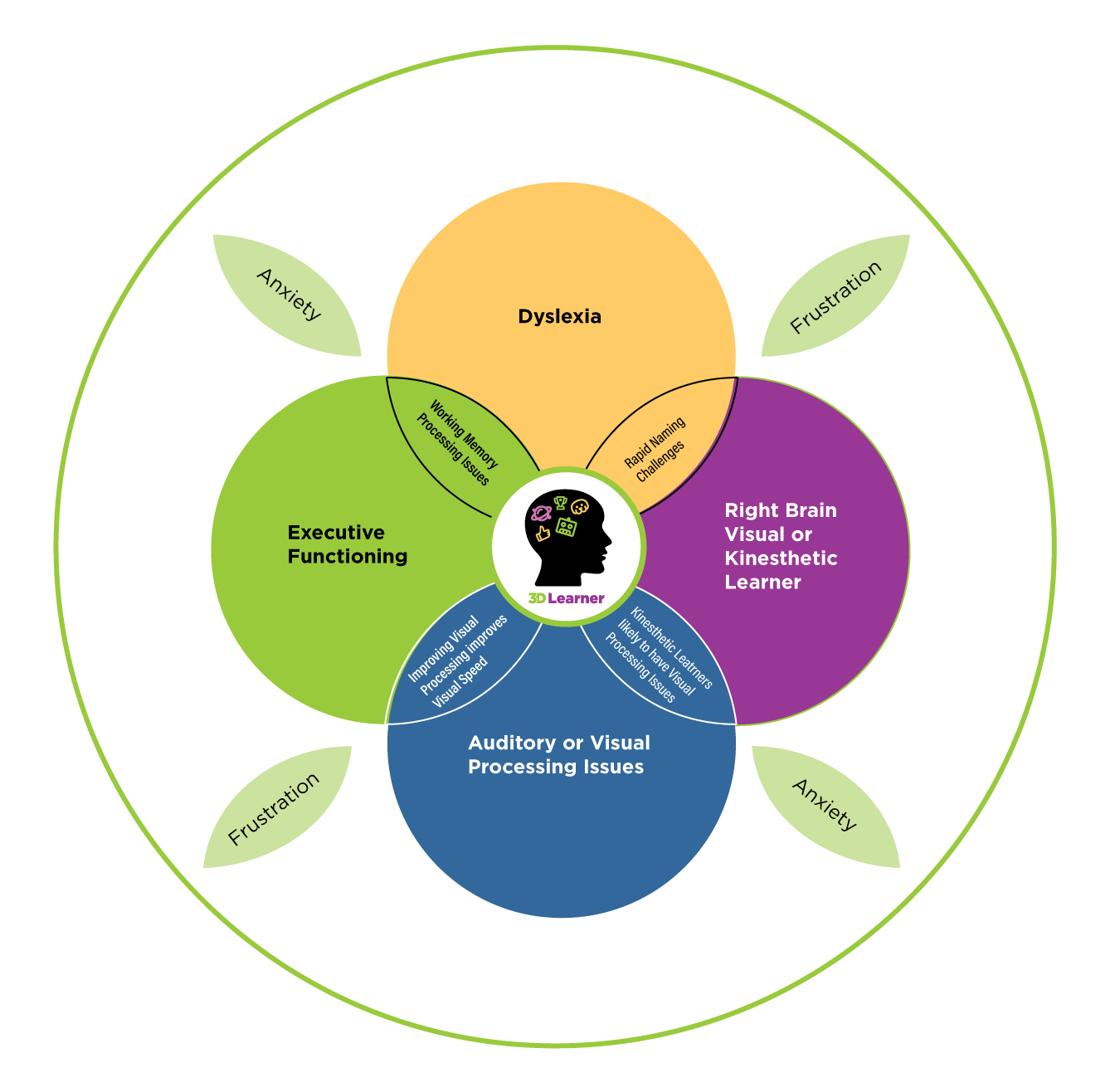
Bright Right Brain Kinesthetic Learners Benefit When One Capitalizes on Their Strengths,
while Identifying and Addressing the Relevant Issues
This Often Requires The Parents to Take Charge
Is your child a bright right brain kinesthetic learner?
- Does your child remember places visited, even from years ago?
- Does your child learn best when he or she sees and experiences information?
- Is your child a lot smarter than present results would indicate?
For a more comprehensive screening tool, download our “Is my child a right brain kinesthetic learner”.
If your child is a right brain kinesthetic learner, you play a pivotal role. Too many of these kids are identified by their challenges. These could include dyslexia, executive function issues, auditory or visual processing and/or anxiety and frustration. We have been there with two of our four kids. Over the last 26 years we have helped thousands of kids like this succeed with a process that starts by helping parents to be an informed, empowered and proactive parent.
We FRAME this differently than most. Specifically:
– Frustration comes with the territory. We encourage you to embrace the frustration and to commit to helping your child to be all they can be. If your child is a right brain kinesthetic learner, there is a good chance that when you leverage their strengths, identify and address their challenges, and leverage their desire to succeed, success is much more likely to follow.
– Reject the status quo and low expectations. Too often we have heard, parents being told that one cannot expect significant gains within a year. Two key points:
- We are seeing many kids whose reading comprehension is far below grade level. This chart shows how often students in special education fall far below grade level
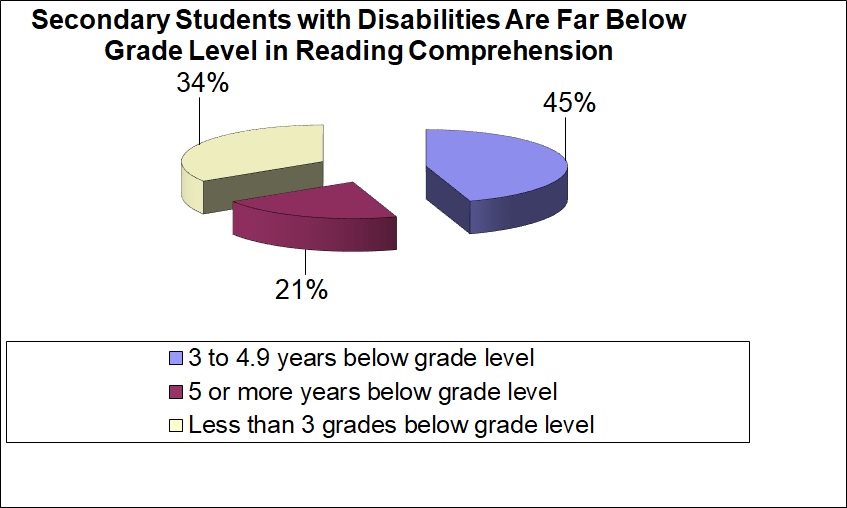
- Improving reading comprehension by 2, 3 or even 4 grade levels within 4 to 6 months is often possible. A few words of caution:
- Such results take both a commitment to training and follow-up
- Students with lower IQs and/or significant impairments may not make these gains
- Cooperation and collaboration help
Waiting is Not an Option
The next critical step is to:
Assess for Success. This would include assessing for:
- How your child learns best
- Executive function issues (e.g. working memory, processing speed and attention)
- Auditory and visual processing issues.
- Dyslexia or another learning disability
- Your child’s present level of reading fluency and reading comprehension
If the assessment shows considerable upside potential, we recommend you adopt the
Mindset that Success is the Only Option. Then you consider
- Enrolling the services of the right professional for your child and you. Ideally, you want to work with professionals who will:
- Leverage your child’s strengths
- Address their challenges
- Boost their confidence and resilience
- Help you to be the coach and advocate your child needs
- Produce excellent results within months
If you would like to discuss how to put your child on their
Pathway to Success, call us at 561-361-7495
Feel free to share with others, who have a smart struggling child with significant upside potential.
Note, next week we will have our second article on Helping Your Bright Right Brain Kinesthetic Learner succeed in 4th grade and above. That article will focus on Assessing for Success.

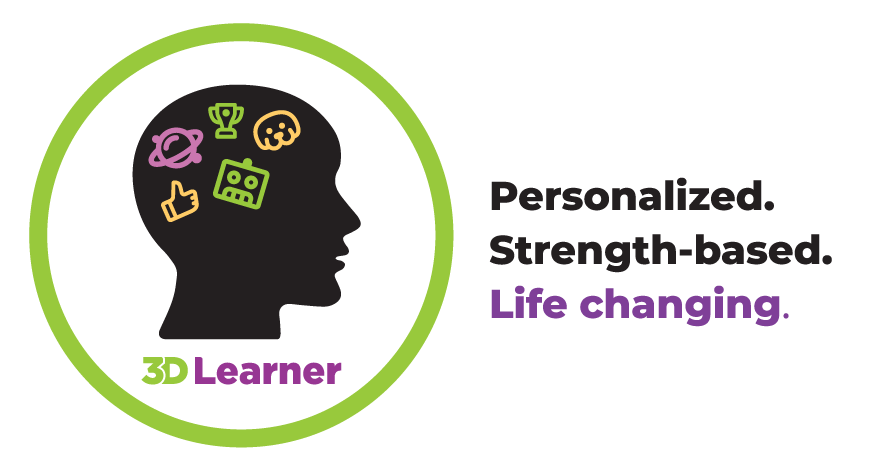
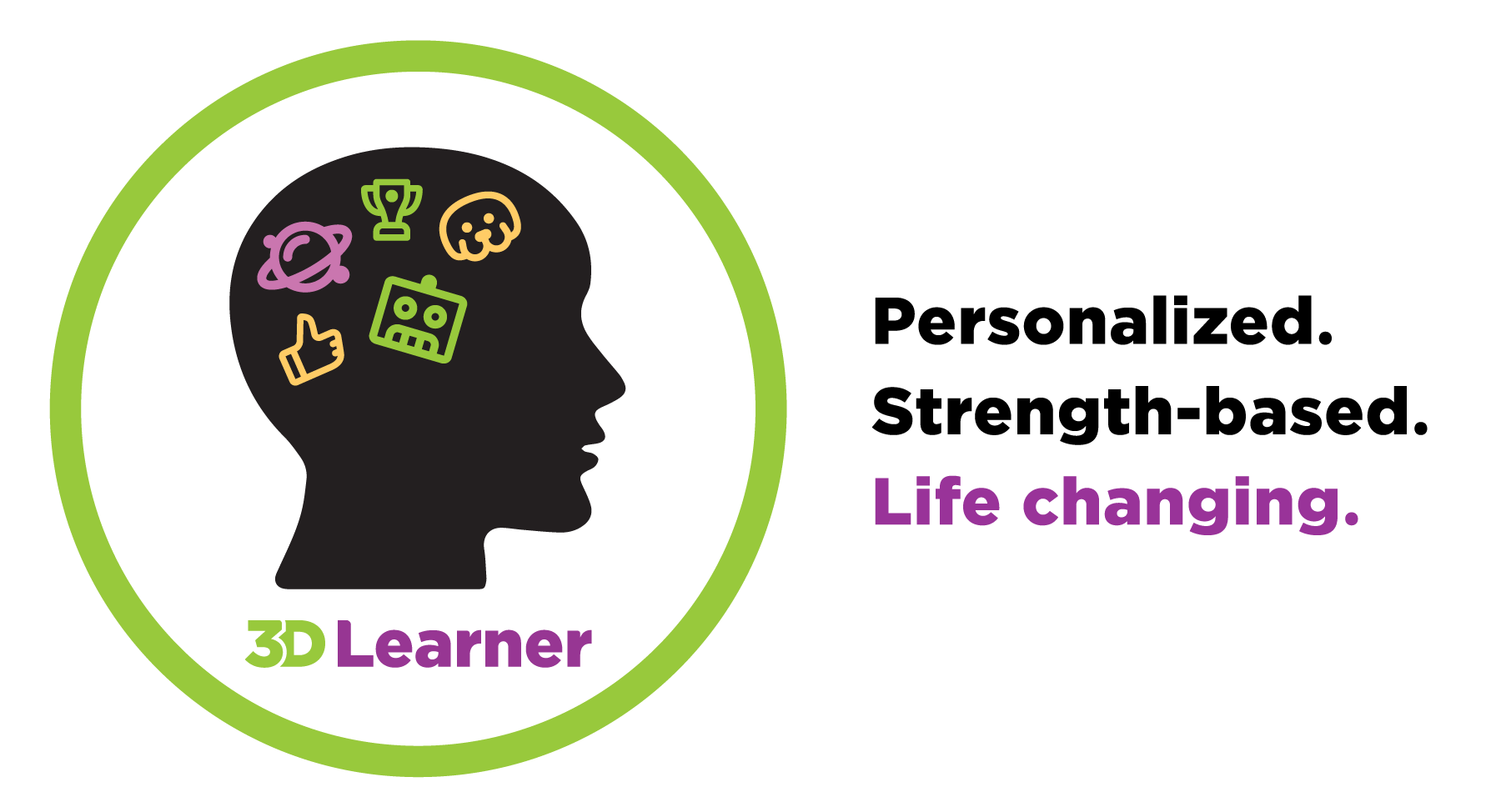








Recent Comments